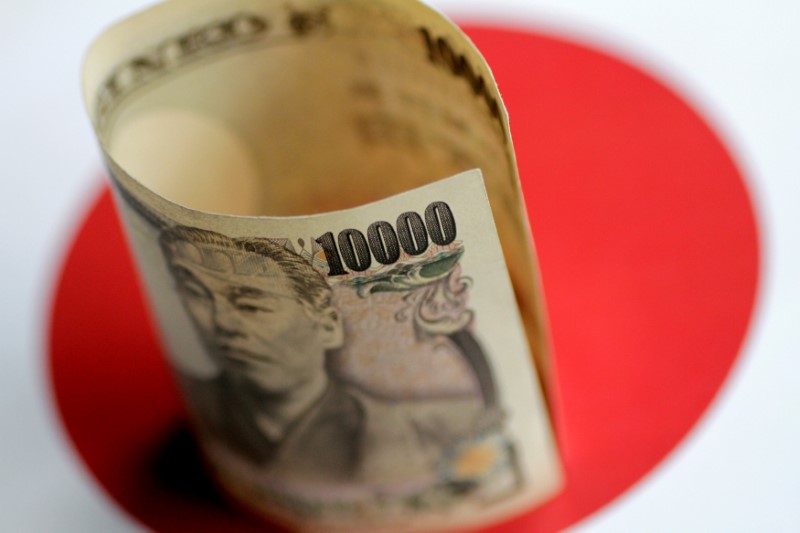Investing.com --The Japanese yen fell sharply on Friday after the Bank of Japan largely maintained its dovish stance, while broader Asian currencies also came under pressure from renewed fears of more interest rate hikes by the Federal Reserve.
The yen was the worst-performing Asian currency for the day, down 0.7% to a one-week low after the Bank of Japan maintained interest rates at record lows and said that it will continue with its quantitative easing and yield curve control policies.
Japanese 10-year bond yields rallied after the move, and were close to testing the upper 0.5% limit, as the BOJ said it will “patiently” maintain its accommodative policies for the time being.
But the bank also hiked its inflation forecast for fiscal 2023, while separate data showed inflation in Tokyo grew more than expected in April, moving back towards 40-year highs. Rising inflation could pressure the BOJ into potentially tightening policy later this year, although the bank quashed such expectations by announcing a year-long review into monetary policy.
Broader Asian currencies moved in a flat-to-low range on Friday, but were set to end the week lower as investors positioned for a widely expected 25 basis point rate hike by the Federal Reserve next week.
The Chinese yuan rose 0.2%, recovering slightly from an over one-month low hit earlier in the week, while the South Korean won added 0.1% on data that showed industrial production fell less than expected in March.
The Australian dollar fell 0.2% as a Reuters poll showed that the Reserve Bank is widely expected to hold interest rates steady next week.
The U.S. dollar index and dollar index futures rose about 0.2% each, but were headed for weekly losses following weak signals on the U.S. economy.
Data on Thursday showed that the world’s largest economy grew at a slower-than-expected pace in the first quarter, amid pressure from high inflation and interest rates. The dollar was largely flat after the data.
But Treasury yields still rallied in overnight trade as other readings pointed to higher-than-expected personal consumption expenditures in the first quarter, while weekly jobless claims also unexpectedly fell.
Signs of sticky inflation, coupled with strength in the labor market, give the Fed more impetus to hike interest rates. Markets are now uncertain over the path of monetary policy after May’s meeting, given that the Fed has offered no signals that it plans to taper its hawkish stance.
